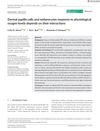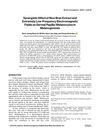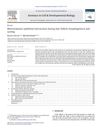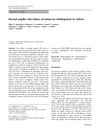Dermal Papilla Cells and Melanocytes Response to Physiological Oxygen Levels Depends on Their Interactions
August 2020
in “
Research Square (Research Square)
”
dermal papilla cells melanocytes physiological oxygen levels physoxia hair growth pigmentation senescence secretome phenotype proliferation migration tyrosinase activity alkaline phosphatase activity reactive oxygen species normoxia DP cells hMel oxygen levels hair pigmentation cell aging cell secretions cell characteristics cell growth cell movement enzyme activity ROS normal oxygen levels
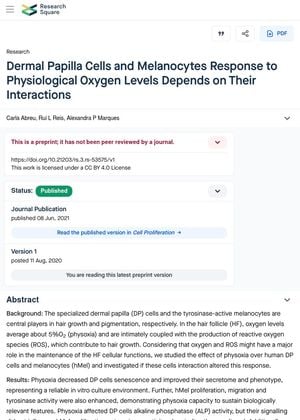
TLDR Oxygen levels affect hair growth and color cells differently when they interact directly.
Three years ago, a study was conducted on the effect of physiological oxygen levels (physoxia) on dermal papilla (DP) cells and melanocytes (hMel), which are crucial for hair growth and pigmentation. The study found that physoxia decreased DP cell senescence and improved their secretome and phenotype, making it a reliable in vitro culture environment. It also enhanced hMel proliferation, migration, and tyrosinase activity. However, the study found that the response to physoxia varied based on hMel-DP cell interactions. When these cells were in direct contact, recreating their native microarchitecture and phenotype, their main functional indicators (hMel tyrosinase activity and DP cell alkaline phosphatase activity) and reactive oxygen species production were higher under physoxia than in normoxia. This suggests that the microenvironment created when hMel and DP cells are in direct contact favors their follicular functions, including promoting hair growth and pigmentation.
